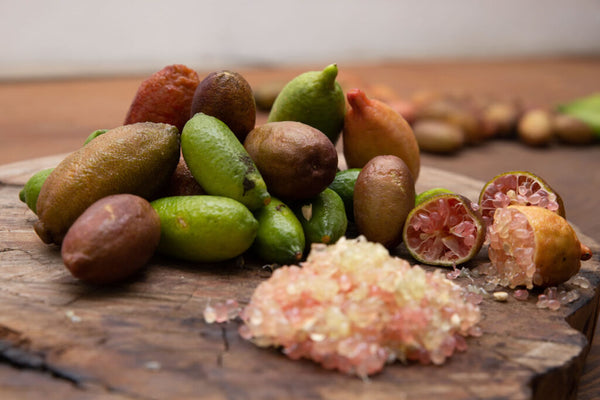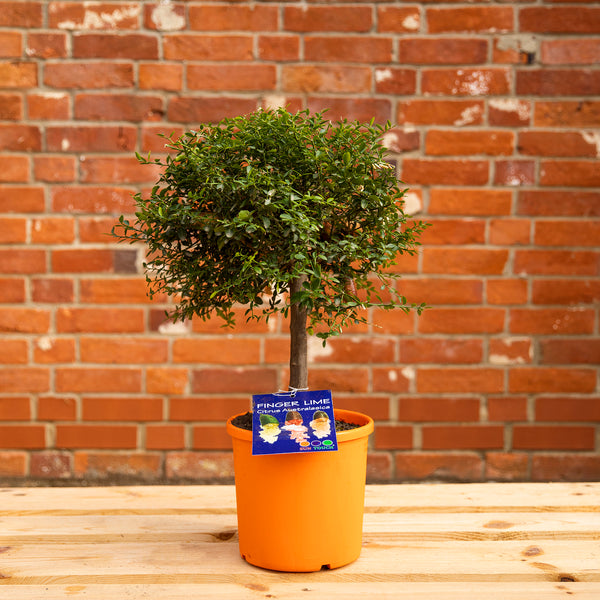Have you ever tried Caviar Limes or, as they're also known, Finger Limes? With a burst of zesty citrus flavour, these unique fruits are making a name for themselves across the globe. From the kitchens of high-end French restaurants, through the bustling food markets of Asia, all the way to Californian cuisine, they've become the ‘new and exciting’ ingredient everybody is talking about.
Imagine a fruit the size of a gherkin, bursting with tiny pearls, each one exploding with lime-like flavour upon biting into them. These aren't your everyday limes; in fact, they have their own botanical name, microcitrus australasica, and are one of just a few citrus species native to Australia, where it can be found in the rainforest regions of Queensland and New South Wales.
Finger Limes, with their shrubby, thorny appearance petite leaves and love of damp conditions, are quite different from the typical mediterranean citrus we are more familiar with. However this makes them well suited to the UK climate, particularly for growing in a pot, making them a perfect addition to your garden or patio. They're compact and hardy, thanks to the Poncirus rootstock we graft our plants onto. This unique grafting technique ensures they're capable of braving a UK winter, albeit with a little winter protection such as a frost-free glasshouse or one of our specialist plant covers.

When ripe, the fruits hide amongst the thorns, their colours ranging from green to dark brown. The interior of the fruit is where the magic happens. Slice one open, and you'll see why they're called Caviar Limes. Tiny, pearl-like 'fruit eggs' tumble out, bursting with intense citrus flavour when bitten - they'll liven up any glass of Pimms, G&T or V&T. You might like to add a slice to your glass too as well as adding a zing to your cooking!
And speaking of cooking, our Australian friends have been incredibly creative with their culinary uses for Finger Limes. From a Caviar Lime marmalade for your morning toast to a sprinkle of these little flavour gems over a summer pavlova. Imagine squeezing them over oven-baked salmon or even adding them to fresh oysters for a show-stopping dinner party dish!





